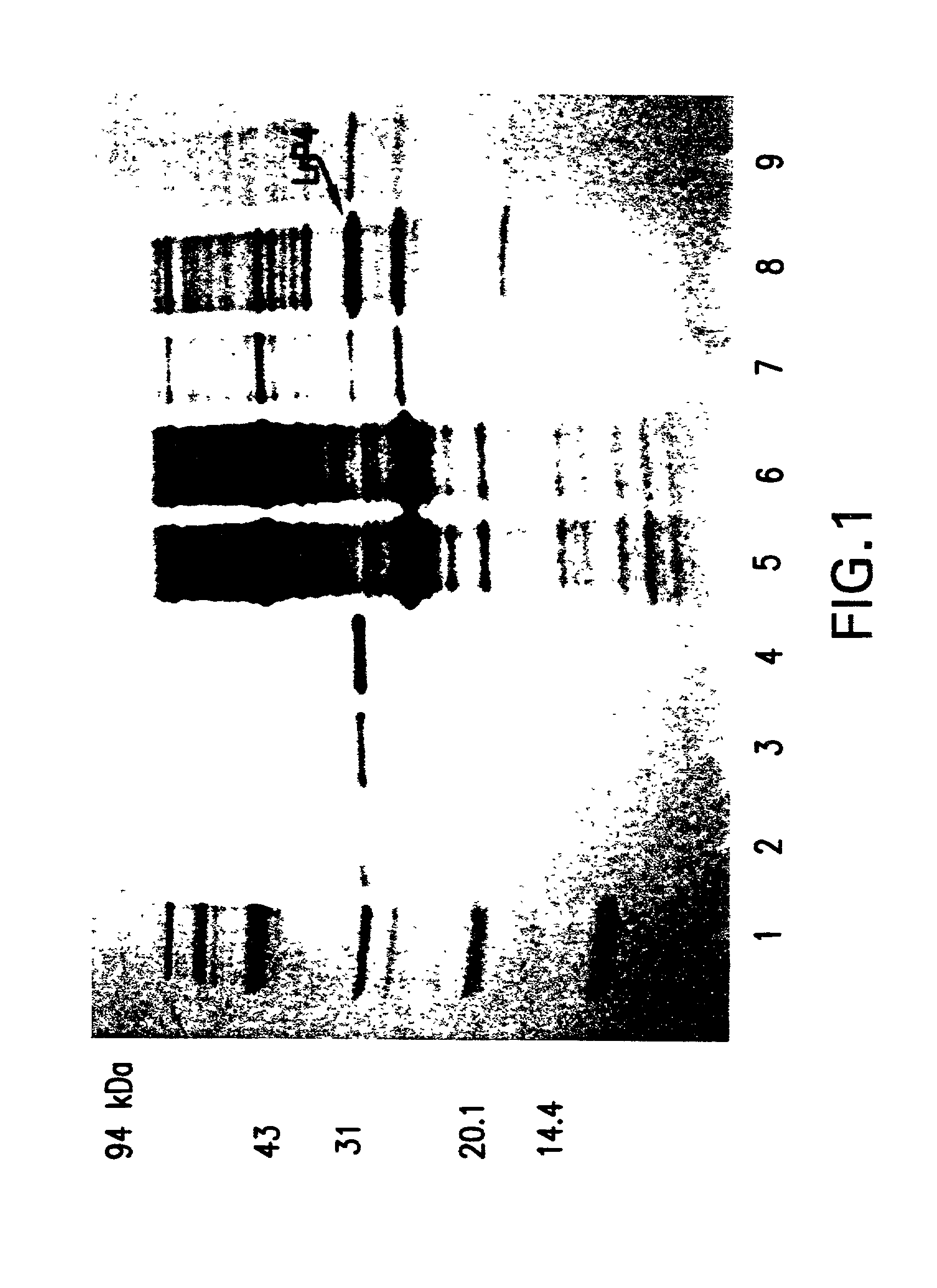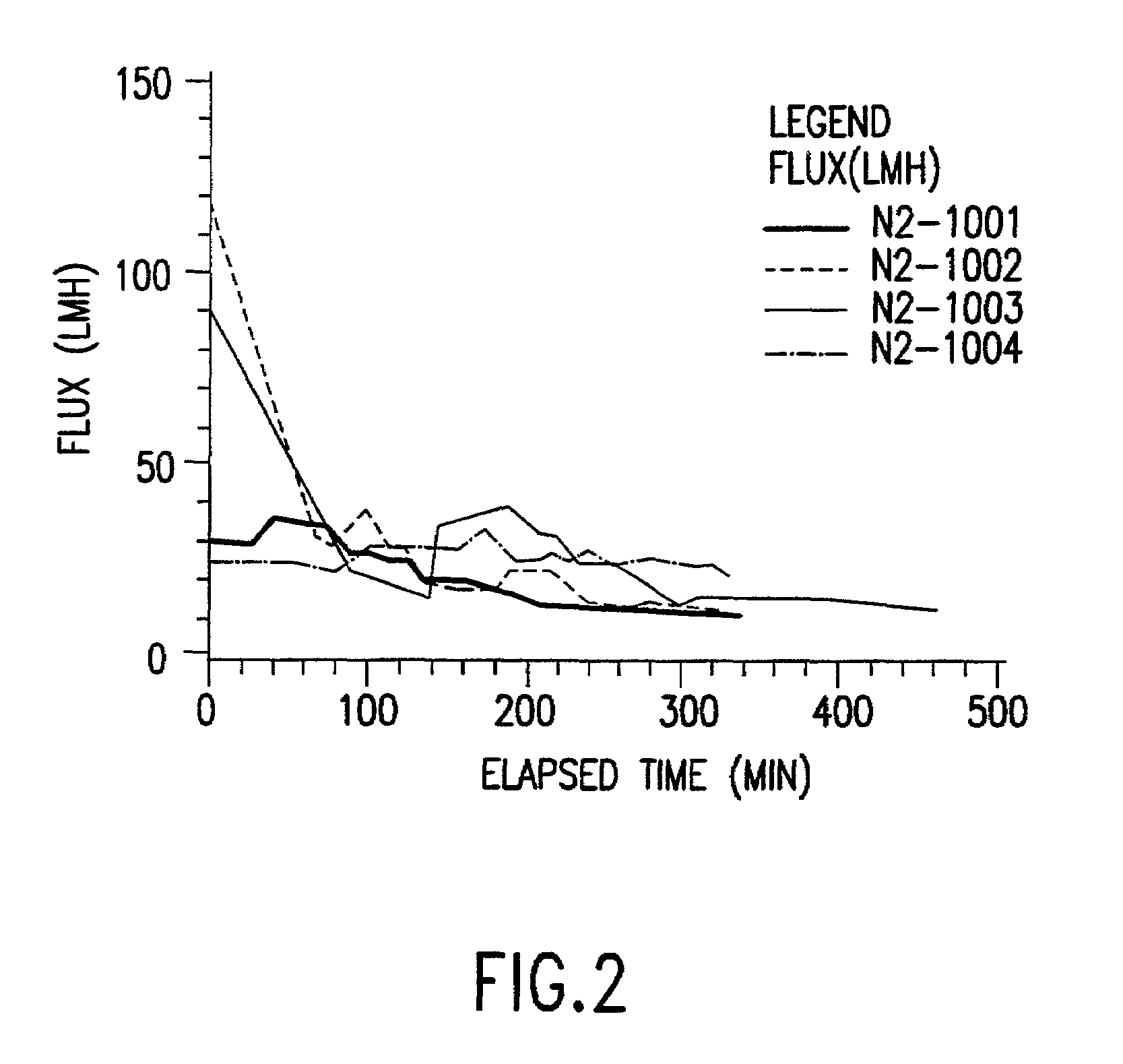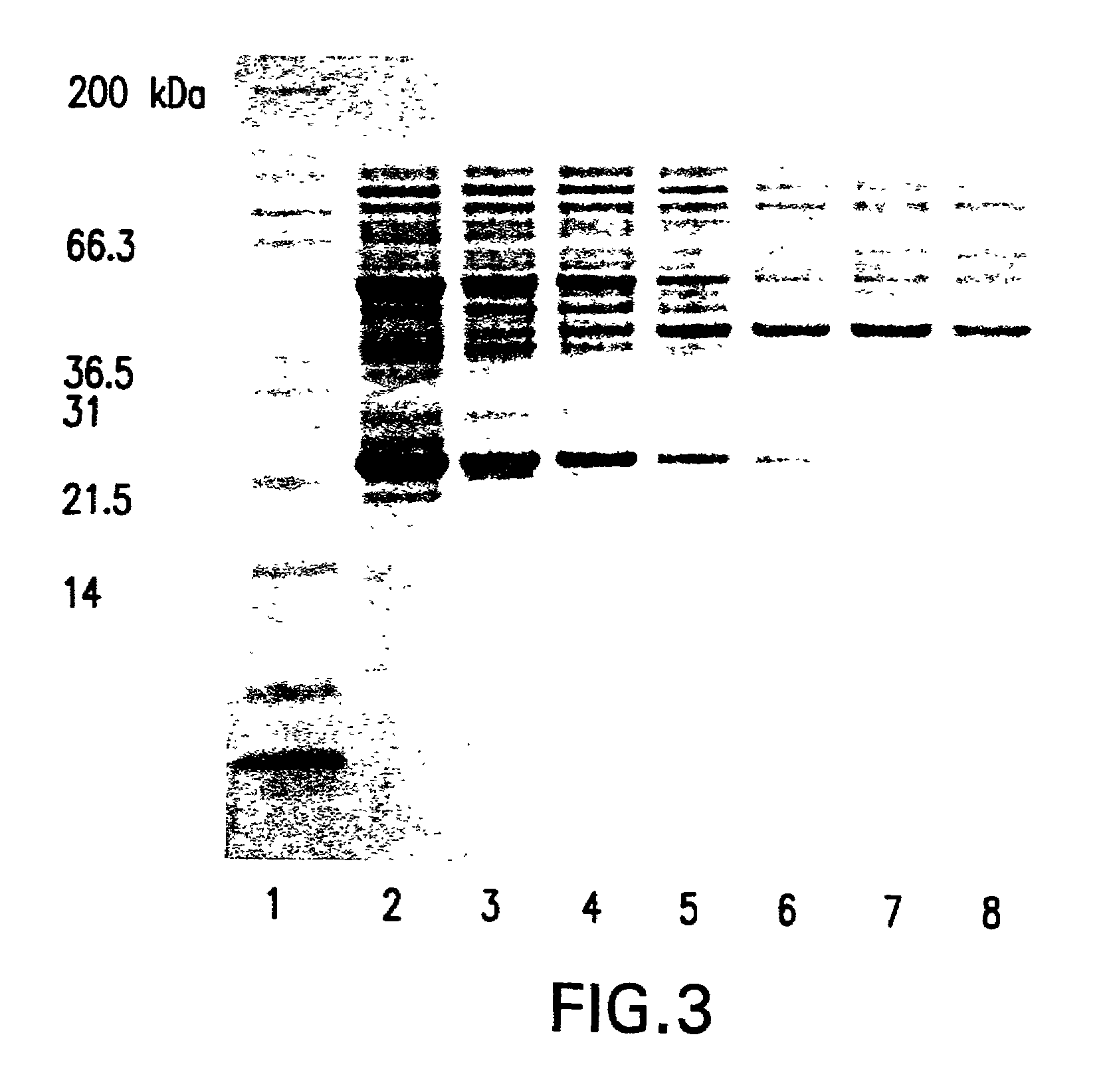Extraction of integral membrane proteins
- Summary
- Abstract
- Description
- Claims
- Application Information
AI Technical Summary
Benefits of technology
Problems solved by technology
Method used
Image
Examples
example 1
Lipidated rP4 Differential
Detergent Membrane Extraction
[0116]The overall process for extracting lipidated rP4 from bacterial cells, such as E. coli cells, involved microfluidization or cell lysis and membrane differential detergent extraction. The fermentation broth was harvested and adjusted to 5 mM EDTA to inhibit possible protein degradation from metalloproteases. The broth was then diluted to less than 5% w / v wet cell weight concentration and lysed with a high-pressure microfluidizer (Microfluidics, Newton, Mass.). The lysed cells were diafiltered with a specific sequence of buffer solutions using a tangential flow system that includes 1000 kD regenerated cellulose Millipore membranes of surface area 0.002 m2 / g wet weight cells. The sequence of buffer solutions was chosen to solubilize inner membrane proteins first and then to solubilize outer membrane proteins which includes rP4. During diafiltration, the solubilized proteins of approximate size less than the molecular weight c...
example 2
Additional Extraction Runs for Lipidated rP4
[0129]This Example presents data generated from four additional extraction runs for lipidated rP4. In each run, a recombinant E. coli fermentation broth was first adjusted to 5 mM EDTA to inhibit possible protein degradation from metalloproteases. The fermentation broth was then adjusted to a wet cell concentration of ten percent and lysed by passing through a Microfluidics microfluidizer. This cell lysate was then aliquoted into portions containing an equivalent of 500 grams of cells and frozen at −70° C.
[0130]A 500 gram portion of lysed E. coli fermentation broth was then removed from −70° C. and thawed in a water bath at a temperature not greater than 40° C. The cell lysate was then diluted to five percent wet cell weight. This five percent cell lysate was then subjected to the differential detergent extraction process utilizing tangential flow diafiltration as described in Example 1. The only slight difference was that in step (4) the ...
example 3
Lipidated rP6 Differential
Detergent Membrane Extraction
[0139]The process for extracting lipidated rP6 was similar to the process for extracting lipidated rP4. However, the diafiltration process required more steps because lipidated rP6 is tightly associated with peptidoglycans. The fermentation broth of E. coli cells expressing lipidated rP6 was adjusted to 10 mM EDTA and diluted to less than or equal to 10% wet weight cells / volume prior to homogenization. The cells were then lysed with a high-pressure microfluidizer and diafiltered at room temperature with a sequence of buffers using a cross-flow membrane filtration device. It was determined that the minimum membrane area to allow efficient mass transport of solubilized proteins through the membrane was approximately 0.002 m2 / g wet weight cells. The solubilized proteins of approximate size less than the 1000 kD molecular weight cut-off rating of the membrane passed through with the permeate, while larger molecules and unsolubilized...
PUM
 Login to View More
Login to View More Abstract
Description
Claims
Application Information
 Login to View More
Login to View More - R&D
- Intellectual Property
- Life Sciences
- Materials
- Tech Scout
- Unparalleled Data Quality
- Higher Quality Content
- 60% Fewer Hallucinations
Browse by: Latest US Patents, China's latest patents, Technical Efficacy Thesaurus, Application Domain, Technology Topic, Popular Technical Reports.
© 2025 PatSnap. All rights reserved.Legal|Privacy policy|Modern Slavery Act Transparency Statement|Sitemap|About US| Contact US: help@patsnap.com



